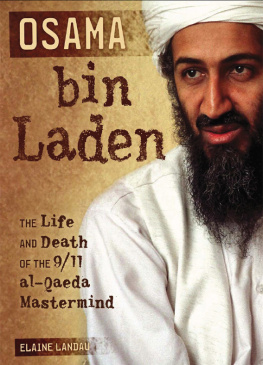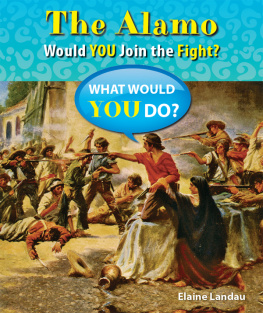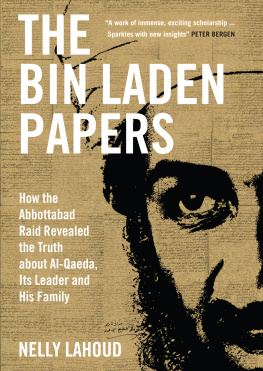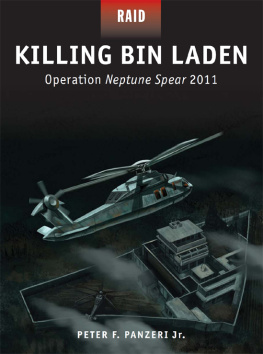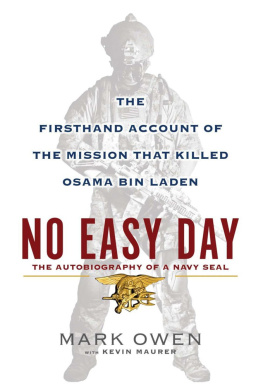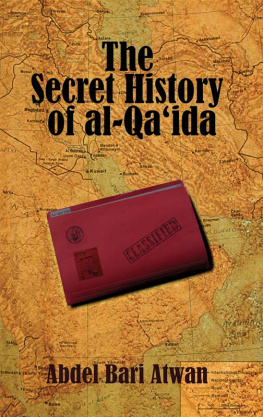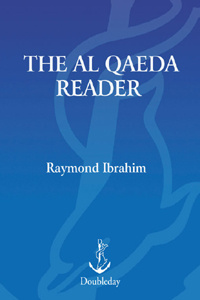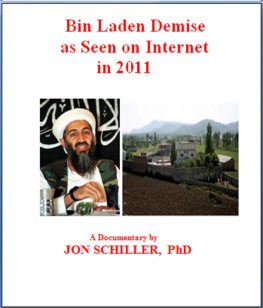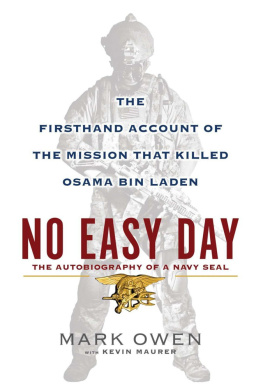I began writing about Osama bin Laden in 1998. At the time, he had just been implicated as the mastermind in the bombings of two U.S. embassies in Africa. Bin Laden had carried out these sinister acts with chilling precision, and it was obvious that he was on the verge of becoming an even more powerful force in international terrorism.
Obtaining accurate information on an internationally wanted terrorist such as Osama bin Laden can be challenging for any writer. While continuing to elude authorities, bin Laden had frequently shifted his hideouts as his supporters deliberately generated misinformation about his whereabouts, tactics, and goals. It was especially difficult to find accurate data regarding Osama bin Ladens personal life, and on more than one occasion, conflicting facts caused bin Laden to be referred to as a fact checkers nightmare.
Despite the difficulties involved, my publisher and I felt it was important to know more about Osama bin Laden and we continued this project. Just as we were putting the finishing touches on the manuscript, bin Laden launched his horrendous 9/11 attack on the United States. Since that time, nearly ten years have passed and much has changed as a result of bin Ladens actions. Feeling it is more important than ever to understand the forces that propelled Osama bin Laden and his international terrorist organization al- Qaeda, weve brought you a look at the life and death of a man at the fore-front of a violent political movement that significantly impacted our world.
Chapter One
OPERATION
NEPTUNE SPEAR
It could have been a scene from a live-action movie. In the early morning hours of May 1, 2011, under the cover of darkness, about twenty-five Navy SEAL (sea, air, land) Team 6 commandos descended on a large walled-in compound on the outskirts of Abbottabad, Pakistan. Arriving in two stealth military helicopters, they were there to carry out a top secret predawn raid dubbed Operation Neptune Spear. This all-star elite military team often performed top secret missions. They had rehearsed this operation at training facilities where practice models of the compound had been constructed for them. Yet up until the time of the actual raid they didnt know who their target was. Then they learned that they were coming for Osama bin Laden. They were there to capture or kill the United States foremost enemy, the mastermind behind the 9/11 terrorist acts. If these highly skilled U.S. warriors were successful, it would mark the end of a nearly ten-year manhunt for the worlds most feared terrorist.
Bin Laden had long been thought to be hiding out in well-concealed caves in remote tribal areas along the Pakistan-Afghan border. Yet more recent intelligence had led the SEAL team to a three-story structure with high walls and a gated entrance about 35 miles (56 kilometers) northeast of Pakistans capital of Islamabad. It wouldnt be easy to enter the compound. Situated off the main road in a largely military town, it was surrounded by 10- to 18-foot (3- to 5-meter) walls topped with barbed wire. Yet the SEALs quickly breached these barriers and got into the compound.

People walked past the compound where Osama bin Laden was killed by Team 6 commandos in Abottabad, Pakistan, just days after his death.
Thirty-eight minutes later, the operation was over, and five of about two dozen people at the compound were dead. Those killed in the raid included Osama bin Laden, his courier Abu Ahmed al-Kuwaiti, the couriers brother, a woman caught in the crossfire, and bin Ladens son Khalid. Bin Laden was killed about twenty minutes into the raid with a shot to his chest and another to his forehead. One of bin Ladens wives was shot in the leg when she lunged at a SEAL but was not killed.
The U.S. commandos had to be sure theyd gotten their man. They knew bin Laden was unusually tall, so one of the taller SEALs got down on the floor next to the body for a height comparison. Another took a photo of bin Laden, which was quickly put through facial recognition software. The result showed a 95 percent likelihood that this was Osama bin Laden. Later, DNA testing comparing bin Ladens DNA to that of some of his relatives indicated a 99.9 percent match. The SEALs found more than bin Laden at the compound. They also scooped up a wealth of written documents, computers, hard drives, and storage devices that would reveal information on future terrorist plots.
The SEAL teams exit wasnt easy. When theyd arrived, one of their choppers grazed a compound wall. Though no one was hurt, the choppers tail snapped off. The SEALs couldnt fly the damaged chopper out of the compound, but leaving it there posed a problem. Their helicopters had been designed with advanced technology that they didnt want to fall into enemy hands. So the SEALs blew up the crippled chopper. Then they got into the other one with bin Ladens body and the materials from the compound and took off. They had accomplished what their country had hoped to do for almost a decade. On nearly the tenth anniversary of 9/11, the SEALs had ended the life of the man responsible for the deaths of thousands of people.
If the raid looked quick and simpleit wasnt. The commandos had merely carried out the last step in one of the riskiest and most meticulously planned covert operations ever pulled off by the U.S. military. Plans for the raid to get Osama bin Laden had started months ago and involved a great deal of effort.
Ironically, bin Ladens location was accidentally revealed to U.S. intelligence agents by one of his couriersa man bin Laden trusted with his life. Bin Laden was known for his shrewdness in evading capture and never allowed al-Qaeda foot soldiers or even their commanders to know his whereabouts. But if he wanted to get out his messages as well as receive money, goods, and information, he had to trust some people. Among these was his loyal courier Abu Ahmed al-Kuwaiti.
U.S. intelligence officials had first become aware of bin Ladens personal courier after interrogating al-Qaeda detainees. Some of the earliest clues came in 2007. While in custody, al-Qaedas third-in-charge leader, Khalid Sheikh Mohammed had given authorities the nicknames of a few al-Qaeda couriers. One of these men stood out from the others when he was later also mentioned by another detainee named Abu Faraj al-Libi. Following Mohammeds arrest, Abu Faraj al-Libi replaced him as al-Qaedas operational leader. The new operational leader had learned of his promotion through a courier. The U.S. agents knew that only bin Laden could have ordered that promotion. If they could locate that courier, they felt sure theyd find bin Laden.
It took years for U.S. intelligence agencies to learn the couriers real name. Then, once they had his name, they couldnt pinpoint his location. While in hiding, bin Laden had insisted that no phones or Internet use go on around himso eavesdropping efforts led nowhere. Finally, in mid-2010, U.S. agents got a break. The courier had a phone conversation with someone being monitored by U.S. intelligence. The courier wasnt at the compound when he made the call, but the agents were still able to locate and follow the courier. In August 2010, they hit the jackpot! The courier unknowingly led them to the compound.

